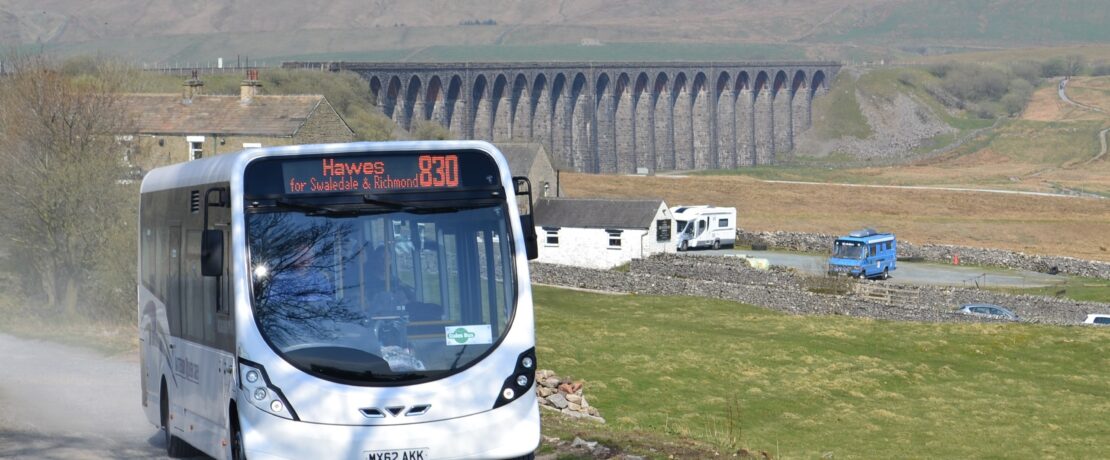Connecting Communities: integrating Leeds-Settle-Carlisle transport
John Carey from the Friends of the Settle Carlisle Line makes the case for integrated transport.
Often regarded as one of the most scenic train journeys in England, the Settle-Carlisle was so nearly lost but for a hard-fought campaign by a well-organised body of like-minded people.
Naturally, many folks come to experience a ride along the Settle to Carlisle line, in some cases bizarrely driving to Settle in the process, only to realise that they could have perhaps boarded their train at Leeds. The name is in fact an unfortunate accident of history for the route was developed at the tail end of railway building and diverged from the already extant line to Lancaster at Settle. Henceforth it has always been known as the ‘Settle-Carlisle Railway’. These days the prefix of ‘Leeds’ would in fact better describe the route.
But a heritage line it is not. The railway was developed as an express through-route, a function it could equally perform today, and is indeed a valuable part of our rail network. In their quest to find a route to Scotland, the Midland Railway had to ascend the hills and pass through remote, inhospitable countryside, most unusual in railway construction. They had no choice for the other natural routes had been taken by competing railway companies. Thus, it created the spectacular route we have today.
Fortunately, many of the intermediate stations were reopened and retained due to the early Dales Rail charter services in the mid-1970s which helped in the cause to save the railway. However, many of these stations are remote and lack connection to and from the areas they serve for most but for the accomplished walker. Only Settle and Appleby stations are proximate to the towns they serve but, for many, any onward travel is challenging to say the least. As will be well-known, Dent Station is 5 miles from the village of that name, a shock to many an uninformed visitor, albeit there is a limited community bus connection. Other stations fare less well. Thus, numbers of passengers alighting and boarding particularly at the smaller stations are much lower than they might be although Horton and Ribblehead will always remain popular for their easy access to the Three Peaks.
Meanwhile, it is generally accepted that we are in the midst of a climate emergency and there is an urgent need for carbon reduction, but also the need to reduce pollution and congestion in our National Parks and areas of scenic beauty. These issues are addressed in the Glover report and the rather incongruously titled Levelling Up and Regeneration Act. It is somewhat ironic that visitors arriving by private motor vehicle are destroying the very aspects of the countryside they have come to enjoy. The sea of cars at Malham, Ribblehead and Hawes on any fine day will testify that we have a problem. We need to encourage a modal shift to public transport.
The Friends of the Settle Carlisle believe in their recently published paper that there is an opportunity to consider the railway as part of a rural transport strategy for the region. Indeed, an integrated network of bus services connecting with the trains would benefit the visitor economy but also permit communities to access the outside world, reducing dependency on the car. The railway is already there and paid for and so it makes perfect sense. However, it is a fact that bus and rail services do not tend to work together. Local authorities have not historically regarded visitor access as one of their priorities and neither has it been the focus of the Yorkshire Dales National Park. Believe it or not, the latest National Park figures suggest that 85% of visitors to the Park arrive by private vehicles whilst only 4% by bus and a mere 2% by rail. Given that the Settle Carlisle is one of the few railways proximate to the Park it can be safely assumed that most of the 2% would be via this route.
Whilst there are a number of connecting bus services these are somewhat fragile and fragmented. Several of these are provided by the voluntary and community sectors such as the almost-unique DalesBus services which interface with the southern portion of the line. These include the 830 Northern DalesBus from Ribblehead to Richmond over Buttertubs Pass which runs on Sundays from Late April through to October with financial support from the Friends of the Settle Carlisle and the Settle Carlisle Development Company. Full details of services in the Dales can be found at www.dalesbus.org
The Case For Integrated Transport on the Leeds-Settle-Carlisle Line Corridor is available for free download via www.foscl.org.uk
About the author
John Carey is a retired chartered loss adjuster passionate about public transport, both rail and bus. He is a board member of the Friends of the Settle Carlisle Line and Dales & Bowland Community Interest Company (DalesBus).
About Our ‘Opinions’ Feature
We love hearing from our community! Our ‘Opinions’ feature is a space for individuals and groups to share their thoughts on key issues affecting West Yorkshire’s countryside and environment. We welcome a range of perspectives and encourage open discussion.
However, please note that the views expressed in these articles are those of the authors and do not necessarily reflect the position of CPRE West Yorkshire. We aim to provide a platform for discussion while remaining committed to our mission of protecting and enhancing our countryside for all.
If you’d like to contribute, we’d love to hear from you! Contact us to share your thoughts.





